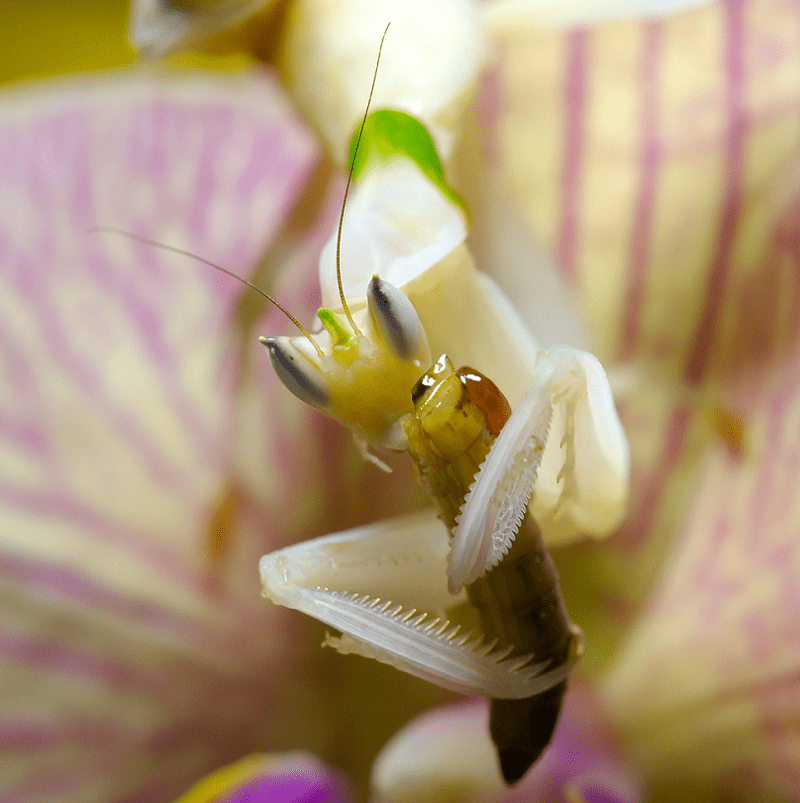
Orchid Mantis Facts
- The Orchid Mantis or Hymenopus coronatus is a creature which combines the qualities of unique beauty with that of the deadly efficiency of a predator.
- This insect remains rather popular for its brilliant coloring and a structure finely adapted for camouflage, mimicking parts of the orchid flower.
- The four walking legs also resemble flower petals, the toothed front pair is used as in other mantises for grasping prey.
- This rather remarkable invertebrate can change its color between pink and brown, according to the color of the background.
Related Articles
Orchid Mantis Physical Description
The gorgeous Orchid Mantis, like its namesake flower, truly constitutes one of the most beautiful, and undeniably deadly to its prey, insects on earth.
Further, the brilliant coloring, which can change at will, from brown to pink, and various shades in between, also provides it with excellent camouflage.
Its body shape also provides the same effect, given that its four walking legs strongly resemble the petals or an orchid.
This species also displays an extreme degree of sexual dimorphism. In addition, females attain an average length of 2.4 in (6 cm), while males only reach about half that.
- Kingdom: Animalia
- Phylum: Arthropoda
- Class: Insecta
- Order: Mantodea
- Family: Hymenopodidae
- Genus: Hymenopus
- Species: H. coronatus
Orchid Mantis Distribution, Habitat, and Ecology
The supremely effective Orchid Mantis evolved as native to the rainforests of Malaysia and Indonesia, in Asia. Though primarily carnivorous, it also likes to nibble on bananas.
Scientists suspect this feeding behavior indicates a need for the potassium. Furthermore, the species will eat any small creature it can catch, except venomous insects.
Like other mantises, it also prefers to lay in wait for its prey among the tropical flowers and trees.
It also requires only a small space and eats flying insects which it hunts by just sitting and waiting.
Species Sharing Its Range
Check out our other articles on 5 Remarkable Bolivian Herbaceous Plants, Homestead Caldera, Monkey Puzzle Tree, Armored Sea Robin, Texas Horned Lizard
